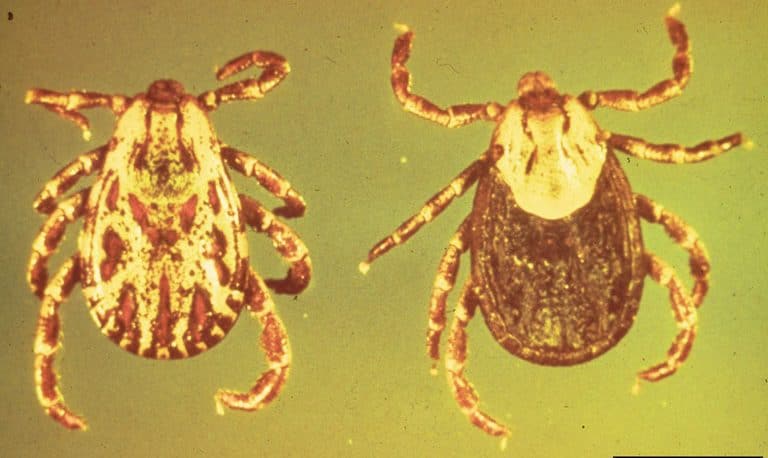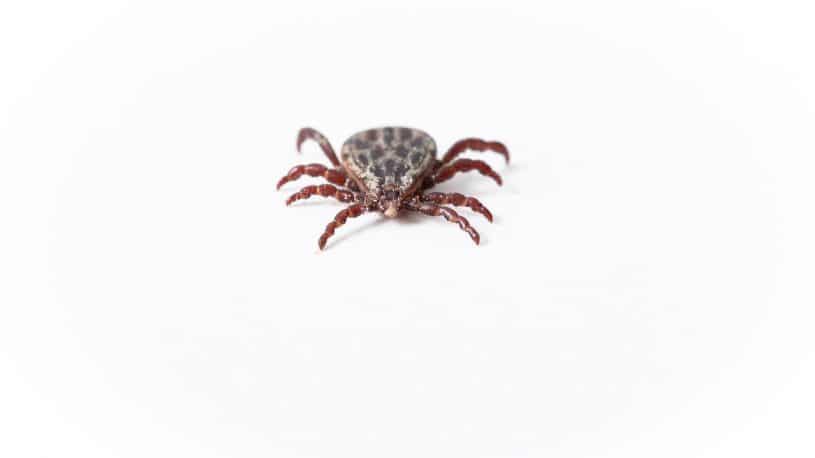Tick Infestation:
How to Get Rid of These Bloodsucking Pests
A tick is a wingless bloodsucking acarid arachnid that attaches itself to warm-blooded vertebrates for feeding. Ticks feed on the blood of their hosts, including wild and domestic animals as well as human beings.
Ticks in House
If you spotted ticks in your house, it’s time to get educated. Ticks are known to carry and spread various diseases like Lyme disease, tularemia, equine encephalitis, babesiosis and anaplasmosis from one host to another through their bites.
Although ticks are mostly found in areas with tall grass as they wait for a passing host to climb on for feeding, they can also be sighted indoors after falling off from their previous hosts. It’s time to beware of ticks since Spring is tick season in New York.
You might have heard the news about how the new invasive tick has been spreading in the U.S. According to a recent New York Times article, a new tick species called the Asian long-horned tick has been found in the suburbs of New York City and other seven states, including New Jersey.
How Long Can Ticks Survive Indoors?
Once a tick drops off in your home, its survival period ranges from minutes to months. Their life expectancy depends on its age and nutritional reserves, the frequency of the vacuuming or cleaning of its harborage, the availability of its predators as well as the temperature and humidity of its indoor habitat.
For instance, in case of a deer tick, one of the ticks that are most likely to get to your indoor area, it can live for just several hours (like eight) if it is in an indoor area with a relative humidity of less than 90%.
However, even if the relative humidity is more than 90%, the tick is likely to die within 24 hours if it is unfed since it has a small food reserve. On the other hand, a deer tick that’s well-fed and is in an indoor place with no predators, such as chickens, cats, and centipedes, is likely to remain alive for up to a month.
Fortunately, even with enough food reserve, predator-free environment, and favorable relative humidity, the tick may not be able to remain alive even for an hour if its surroundings are cleaned regularly or have some pesticide residues that it might come into contact.

American Dog Tick (Center for Disease Control, Centers for Disease Control and Prevention, Bugwood.org)
“Although ticks are mostly found in areas with tall grass as they wait for a passing host to climb on for feeding, they can also be sighted indoors after falling off from their previous hosts.”
Control Exterminating
How Do Ticks Get on You?
Although ticks usually live in outdoor areas, they can get inside your home through people or pets, their main hosts. These pests usually climb tall grass in the woods or yards waiting for a passing animal.
When an animal or person brushes against tick-infested grass, some ticks grab onto the host. In the case of a human being, a tick is most likely to attach itself on his or her clothes and then starts making its way toward warm and moist body areas like the armpit and the groin.
In pets, ticks usually penetrate through their fur to get soft body areas to bite. When going back home or other indoor areas, the host (animal or human being) carries along the tick(s).
Depending on the species and the stage of the development as well as the host type, a tick will suck blood from the host for a period ranging from several minutes to days. Then it will detach itself from the host and fall on the ground. That’s when you’ll spot it crawling or hiding somewhere else in your house.
How to Keep Ticks Away
-
- Check for stray ticks in the house on your pets (mostly dogs) and the clothes of any member of your house, including yourself, whenever they come from areas that are vulnerable to tick infestations. If present, kill the ticks physically or spray the affected pet and clothes with an eco-friendly and appropriate pesticide.
-
- Repair and fill in all crevices and gaps that ticks may use as hideouts or entryways to your house.
-
- Regular vacuuming and cleaning of areas susceptible to pest infestations, especially where your dog rests.
- Regular trimming of the grass surrounding your house.
Keeping a tick infestation at your home in check is important. Otherwise, it might turn problematic to wipe out. Be sure to take note of these tips and apply them to get rid of these bugs from your home.
 Ticks in Yard and Wooded Areas
Ticks in Yard and Wooded Areas
Springtime is perfect for visits to the park, hiking a local trail or just going on a pleasant morning stroll. Unfortunately, we are not alone during these fun spring activities. Ticks are out in strong numbers hoping to find a free meal from an animal or human to feast on.
Patient Pests
Many people who have no experience in dealing with ticks rarely even think about their existence or that they may be at risk of getting too close to ticks. During this time of year, adult ticks will crawl up vegetation to about waist height and patiently wait for the next warm-blooded person or animal to walk by.
A tick will wait all day if they have to for a hiker or animal to stroll by, giving the tick the perfect opportunity to latch on and begin their journey to their next meal. Once a tick has latched onto your clothing, they will immediately begin searching for a way to get to your skin, sink their jaws into your body and begin sucking out your blood.
The worst action you can take is to ignore the fact that ticks are present in the area. The best defense against ticks in the area is a good offense. Control Exterminating is skilled and experienced in dealing with local ticks. We’ll keep your home safe from ticks the many dangers that they pose.

“During this time of year, adult ticks will crawl up vegetation to about waist height and patiently wait for the next warm-blooded person or animal to walk by.”
Control Exterminating
Cover Your Body Properly to Prevent Ticks
One of the smartest steps to take when avoiding ticks is to cover your body properly. If you know, you will be in a heavily wooded area, or an area that is known to have ticks nearby, take the time to cover yourself up.
Long sleeve shirts, long pants, pants tucked into socks and hats are all great ways to keep ticks on the outside of your clothing. Light colored clothing is also a smart choice to make; the light colored clothing will make it much easier to spot any ticks that have latched onto your clothes during your outing.
Tick Inspections, Prevention, Control, Management & Removal in Manhattan NYC, New York
After you return from your outing, take the appropriate time needed to inspect your body for ticks thoroughly. Ticks enjoy hiding or burrowing themselves into areas like your underarms, behind your knees, behind your ears, and between your toes.
If you fail to check for ticks properly, you are putting yourself at risk of contracting Lyme disease and other dangerous illnesses. If you notice ticks close to your home, contact Control Exterminating immediately.***
More about ticks:
[catlist name=“Ticks”]


I use DE and nematodes in my yard. DE in the house. Live in TN tuff ticks!!